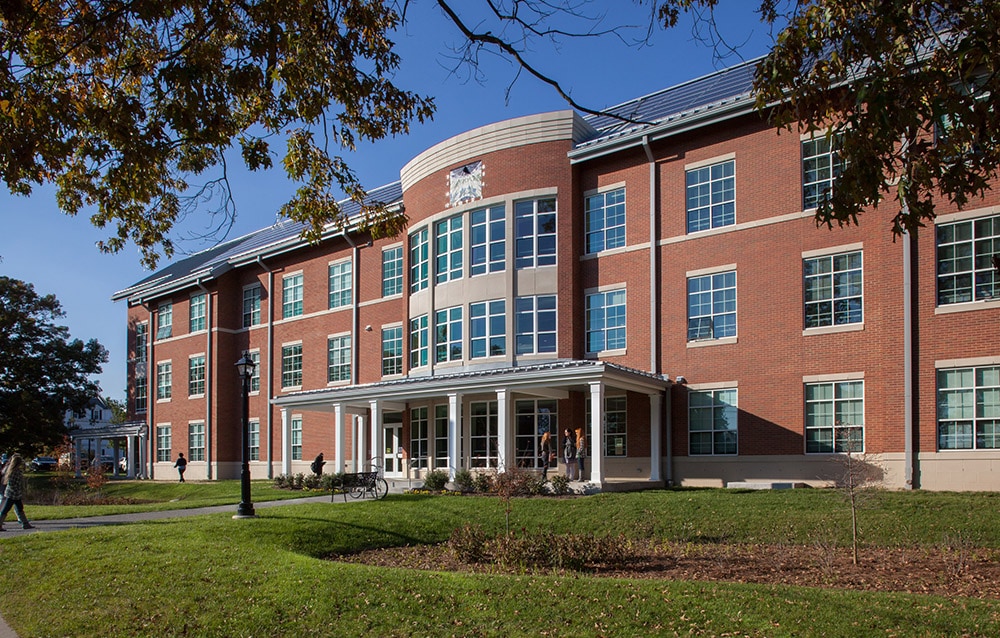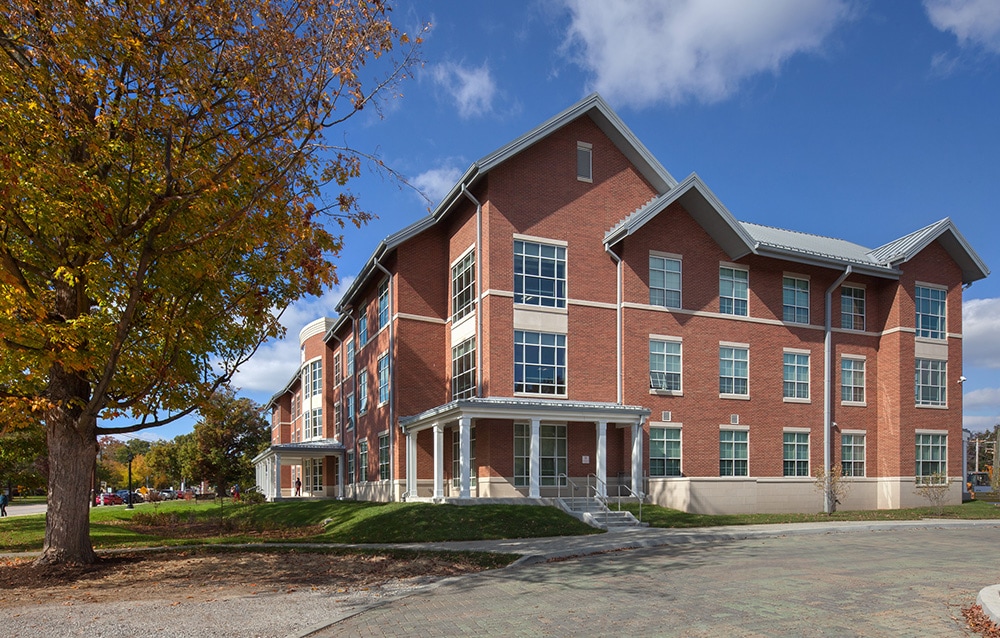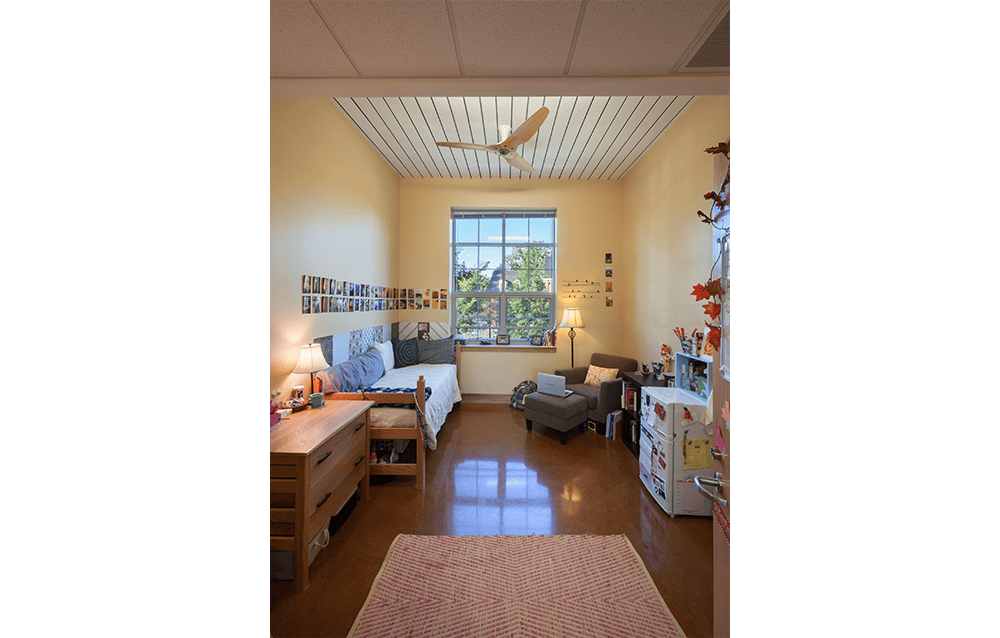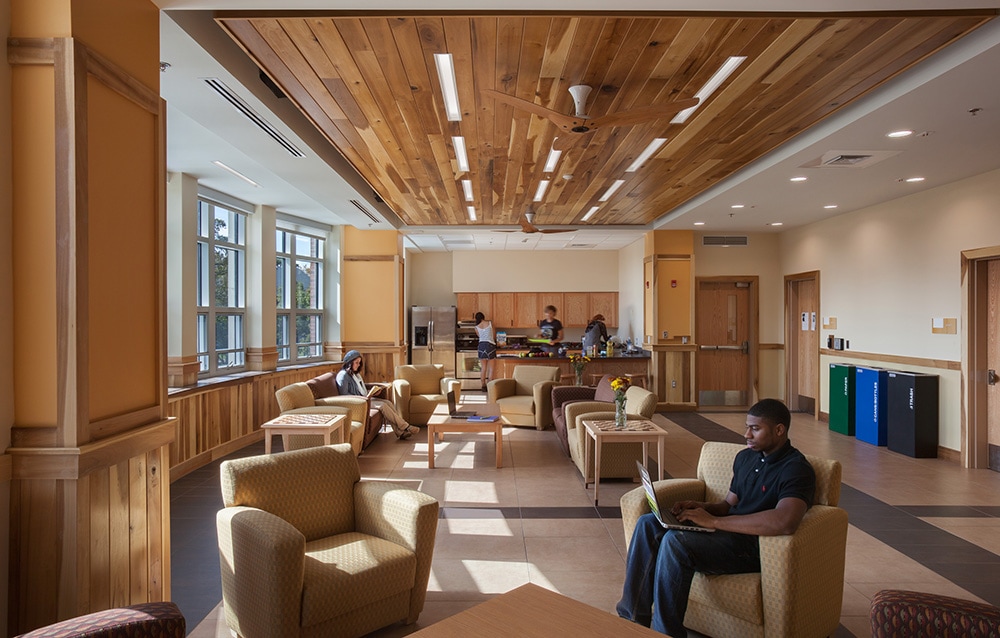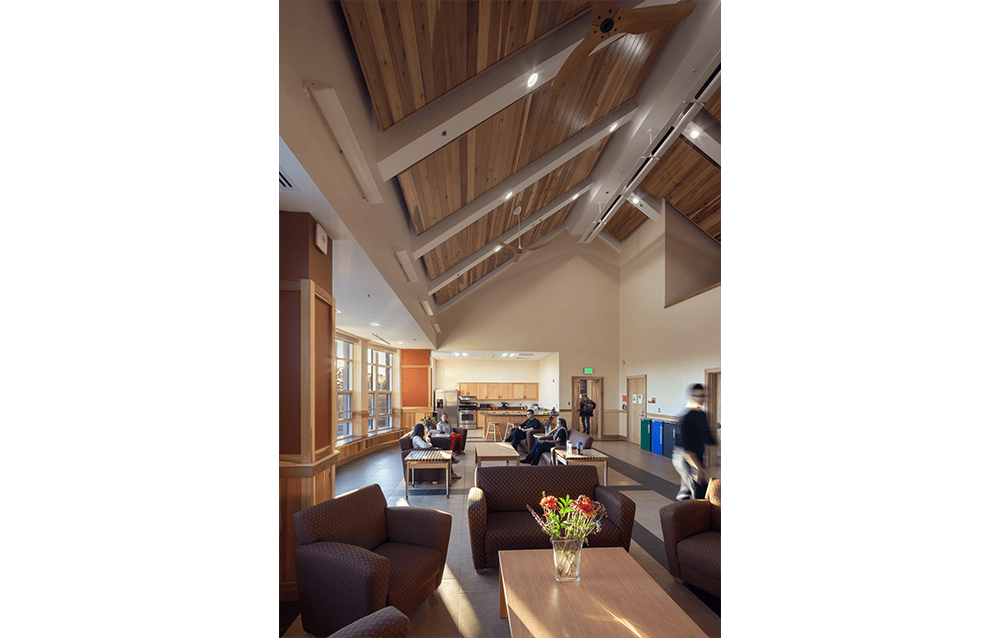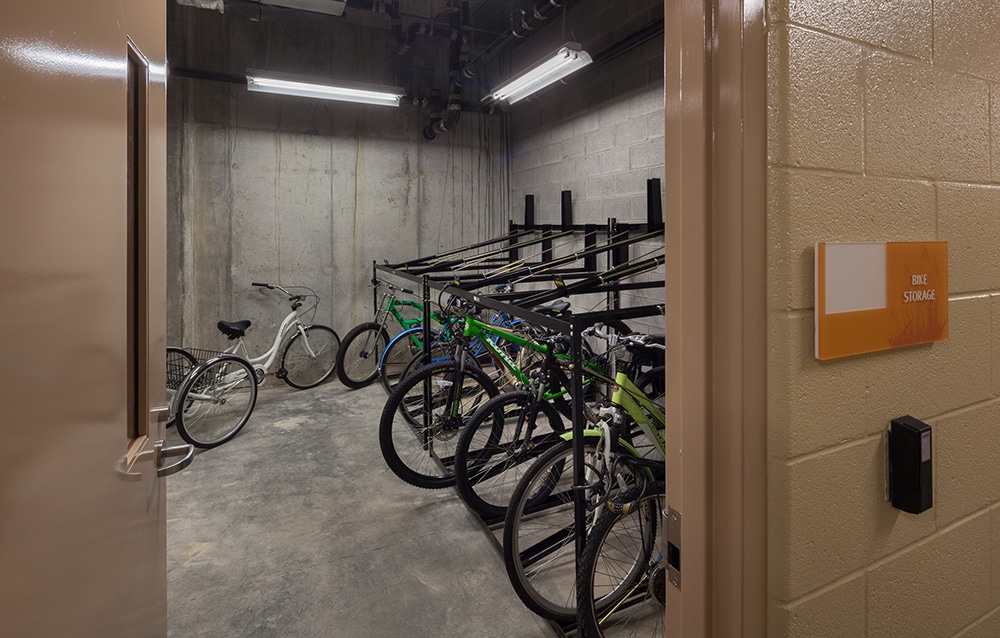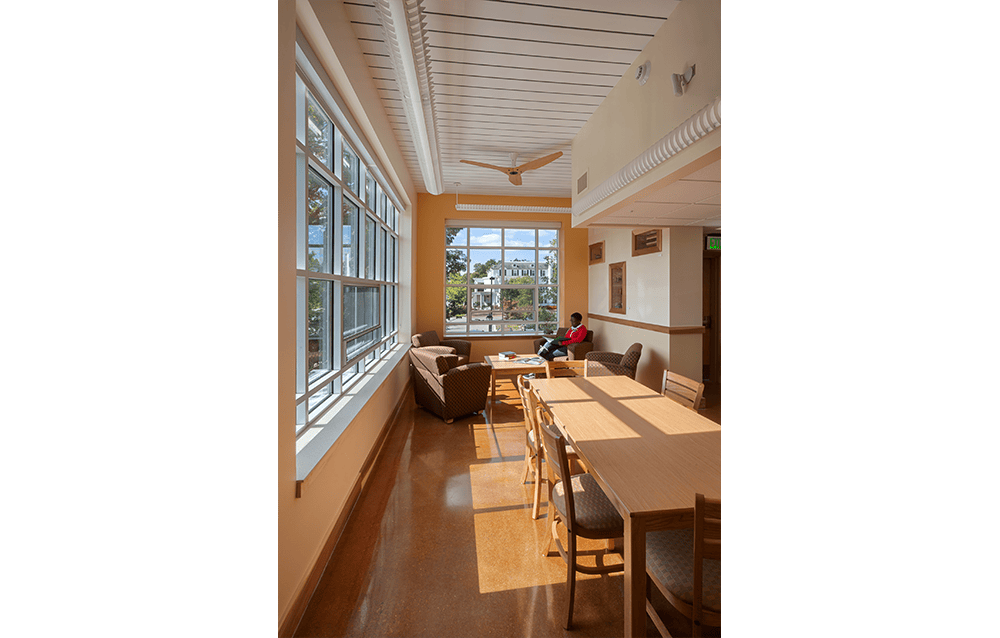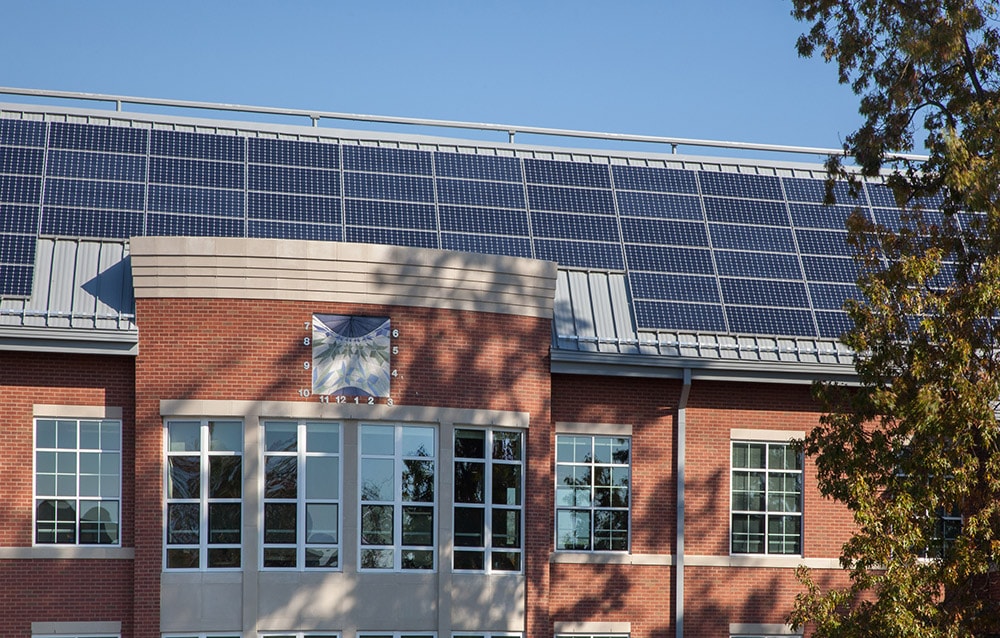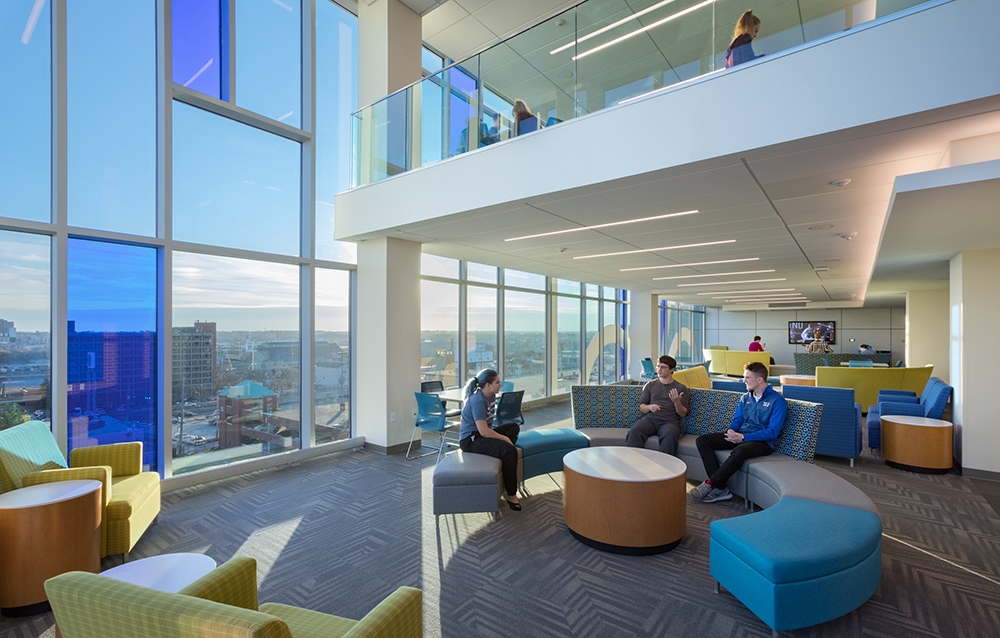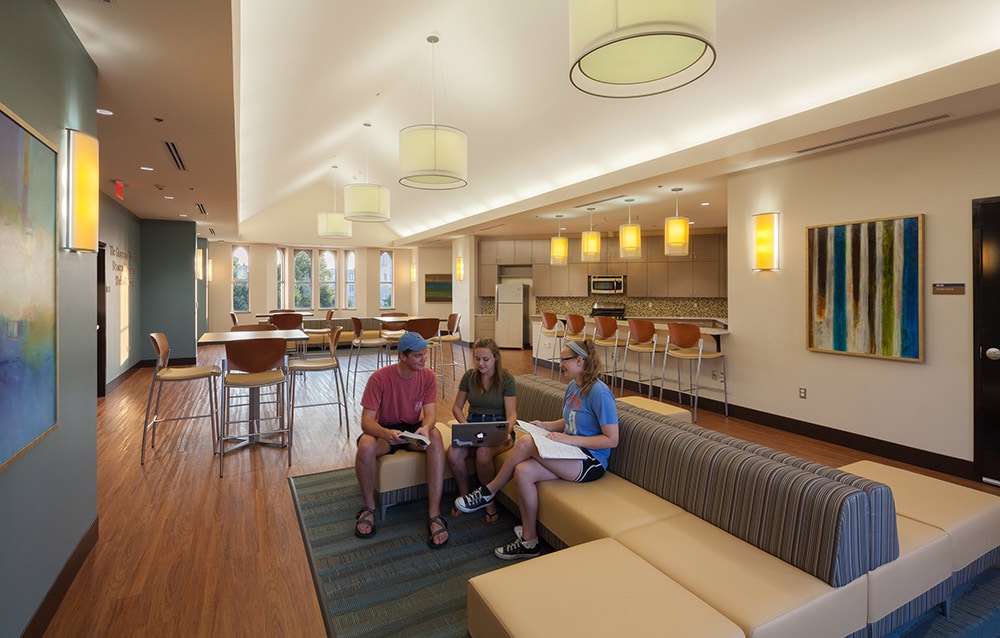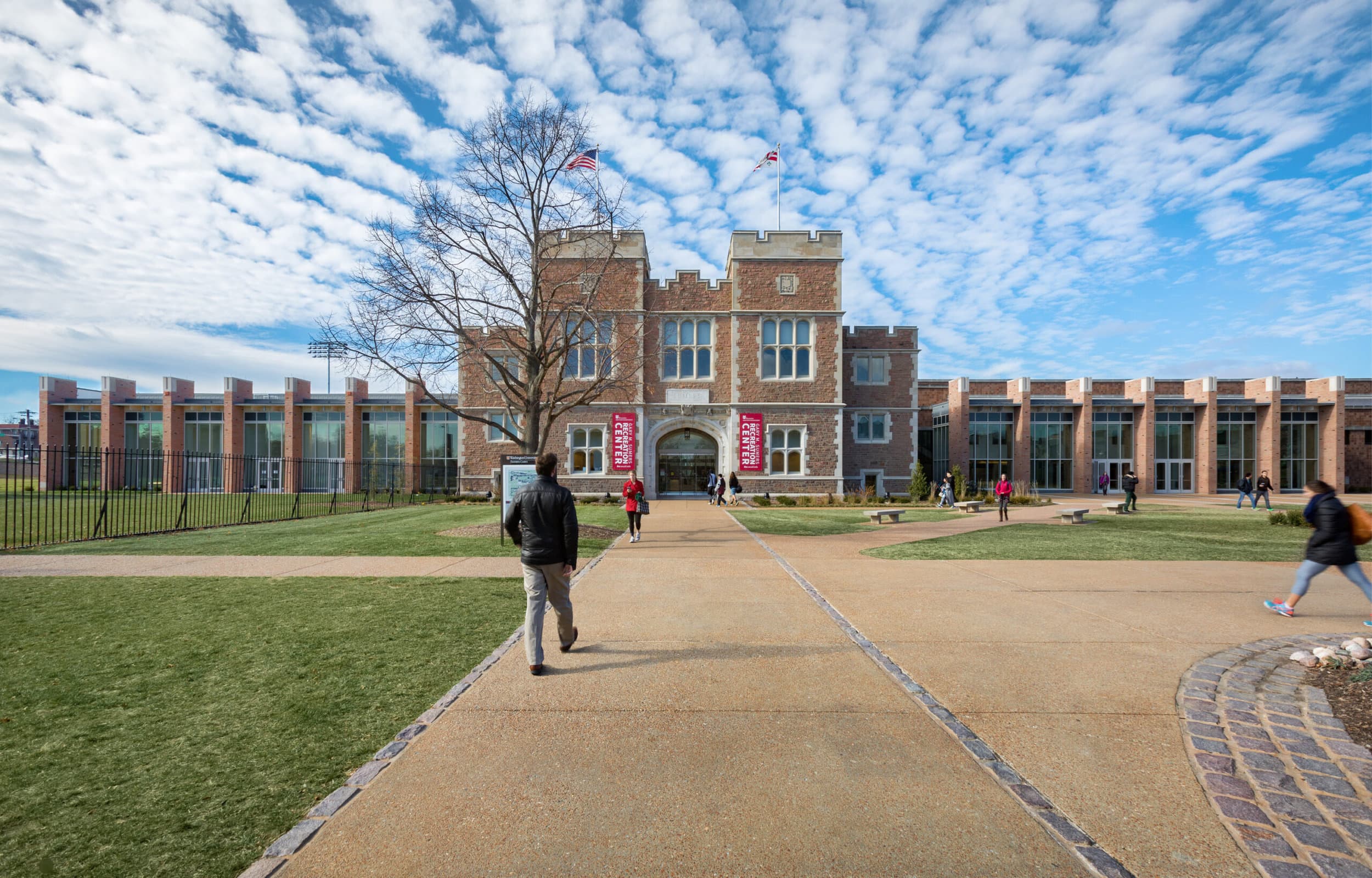Shinn Residence Hall
Mule logging, student woodworkers and student artists created this sustainable living laboratory.
Berea College challenged the design team led by Hastings+Chivetta Architects to develop a highly sustainable residential facility that embraces sustainable living practices and complements the simple living culture and values of its campus.
On a practical level, the new facility provides 121 new beds to maintain housing stock as older facilities go offline for renovation. It also responds to student survey requests for flexible living environments with shared community resources. On an instructive level, the facility is designed to expose students to a new and innovative living experience.
Shinn Hall is an active living/learning laboratory for students, allowing them to test, study and apply real-world solutions to adopt simpler, more sustainable lifestyles. From the earliest stages of design and construction, the commitment to environmentally-conscious design and utilizing the skills and resources of the campus community were apparent. Poplar trees were harvested from Berea’s FSC Certified Forest and hauled by mules to the wood studio. Students milled and cut the lumber for Shinn Hall’s trim work, and built desks, chests and tables for each room. Student-designed fine art is prominently incorporated throughout the facility, including the 7’x5’ ceramic Berea Sundial installed on the front façade. The student-run organic farm provides fresh, healthy food for students living in Shinn Hall.
Building systems are designed to make students aware of their own consumption via an integrated building dashboard system that monitors energy production and use.
Additional sustainable features include: geothermal heating and cooling, a photovoltaic roof array generating 13% of the building’s power, an exterior clad with 100% recycled brick, operable windows with low-e glazing, and high-efficiency lighting systems with occupancy sensors.
The project has received LEED Platinum Certification and is Petal Certified by the Living Building Challenge version 2.1.
